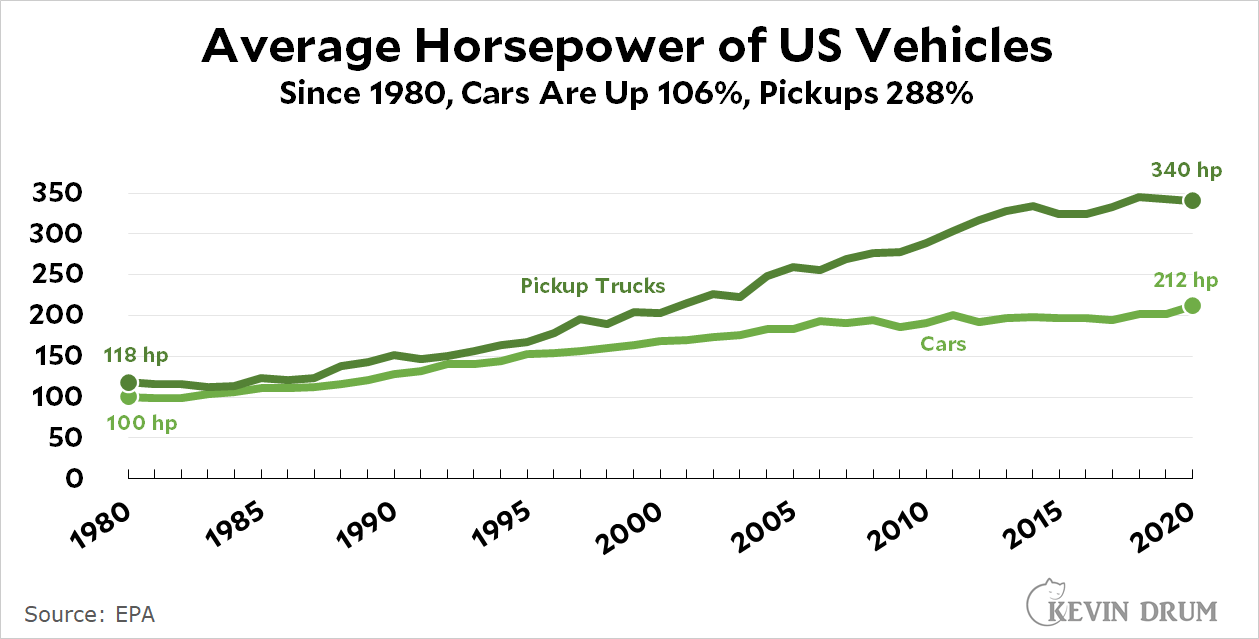Courtesy of the EPA, this chart shows the average horsepower of new cars and pickup trucks sold in the US since 1980:

It's almost impossible to find a car these days that boasts only 100 horsepower—the average in 1980—but the Toyota Yaris clocks in at 106 hp. This gives it an EPA mileage rating of 35 mpg.
In other words, a fleet of vehicles with modern technology and an average of 100 hp would deliver a fleet average of about 35 mpg. Instead, we've used technology mostly to increase horsepower. Average fleet horsepower for all US vehicles (cars, trucks, SUVs, everything) has increased from 103 hp in 1980 to 247 hp in 2020. As a result, average fleet mileage since 1980 has increased only from 19 mpg to 26 mpg.
If our current overall fleet mileage were instead 35 mpg, we would save nearly 40 billion gallons of gasoline per year. That amounts to a reduction of 350 million tonnes of CO2, which is about 6% of total US emissions.
Would that be worth it? Your call.
POSTSCRIPT: The Toyota Yaris accelerates from 0 to 60 in 9.6 seconds. That's about the same as the Mazda RX-7 I owned in 1980, and only slightly worse than the Subaru Forester I own now. As a comparison, the RX-7 (0-60 in 10 seconds) seemed pretty sprightly to me back in the day, while the Forester feels gutless even though it's actually faster than the RX-7 (0-60 in 8.6 seconds). This is how our expectations have changed thanks to the ever increasing horsepower of US vehicles.







